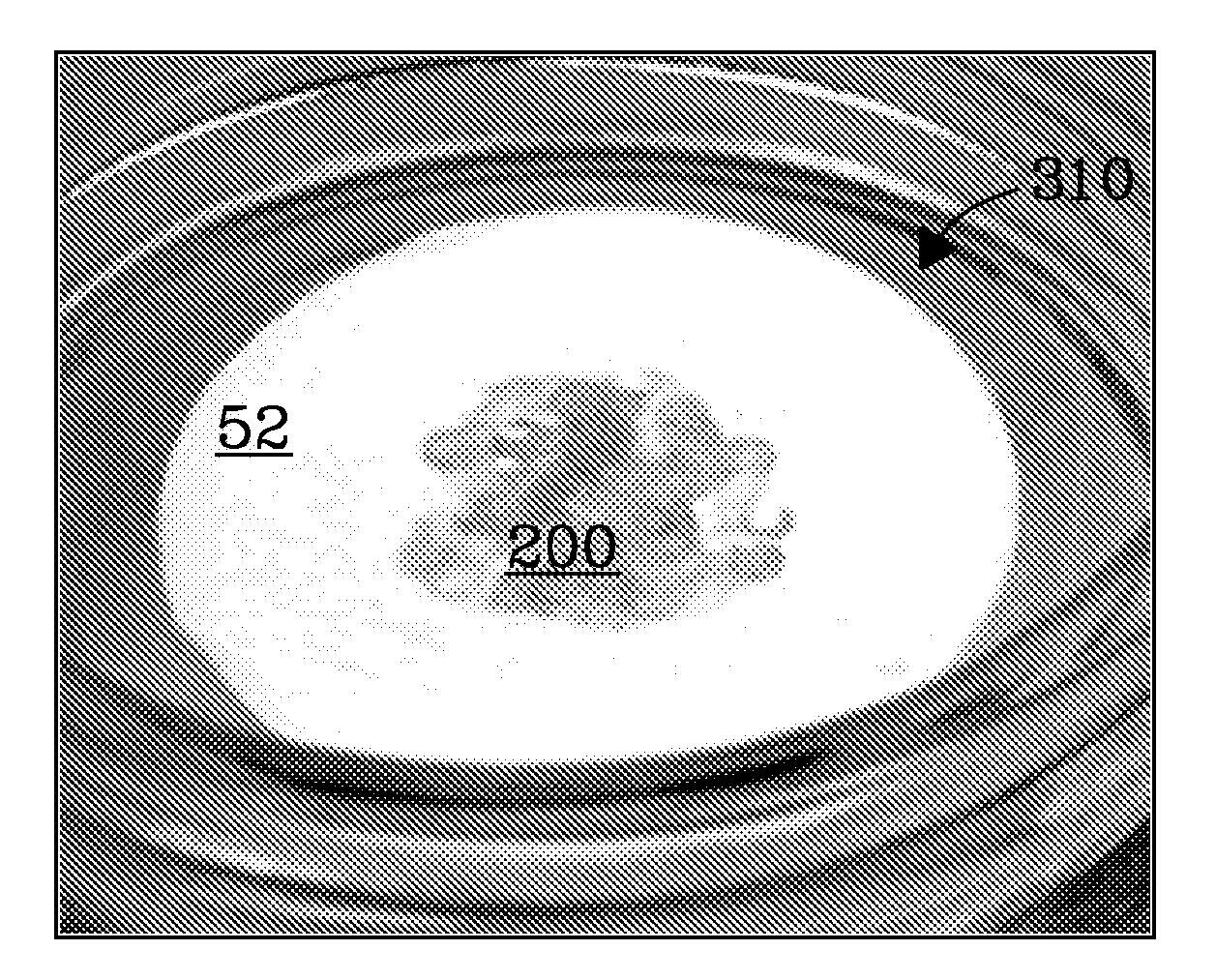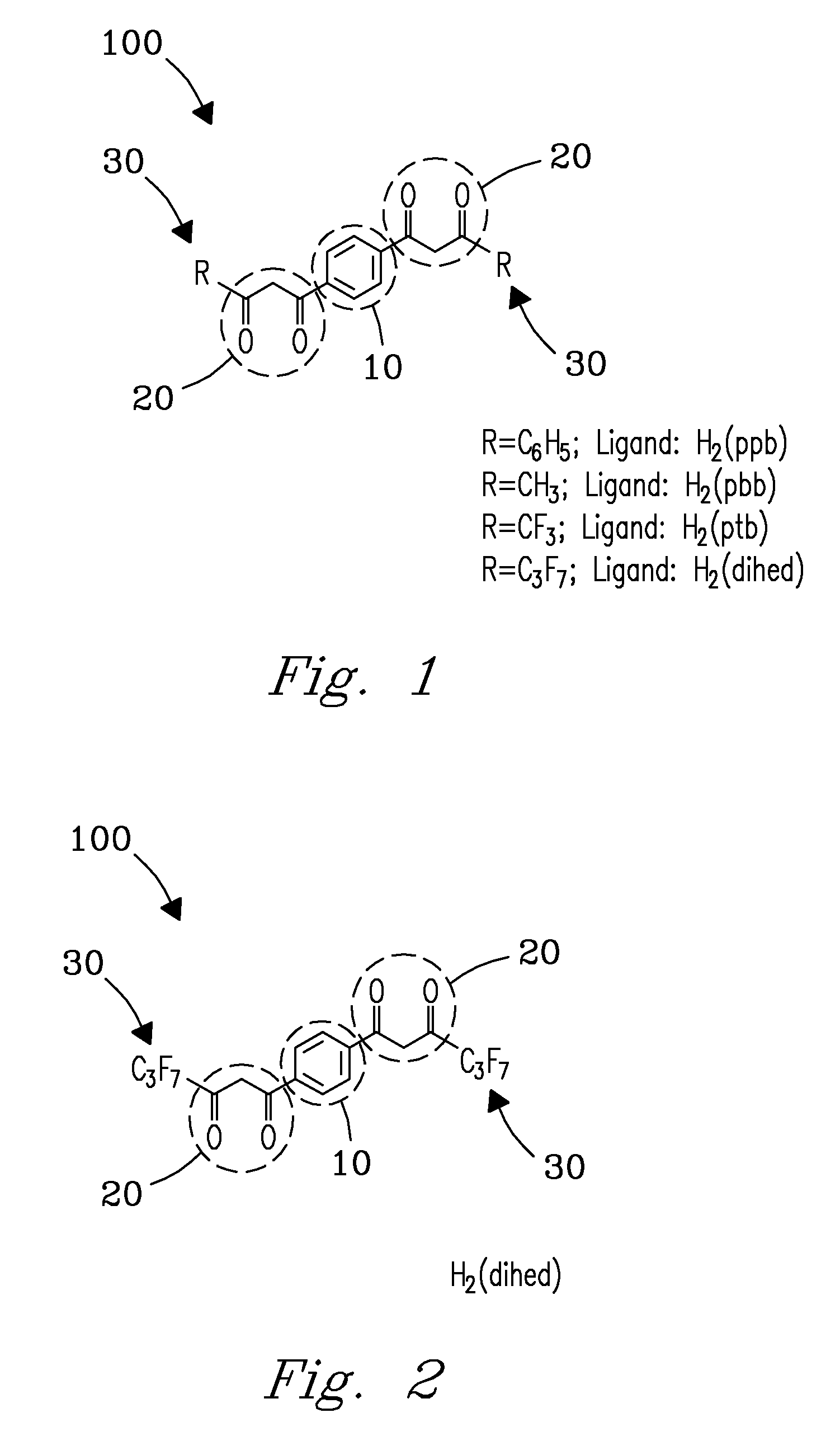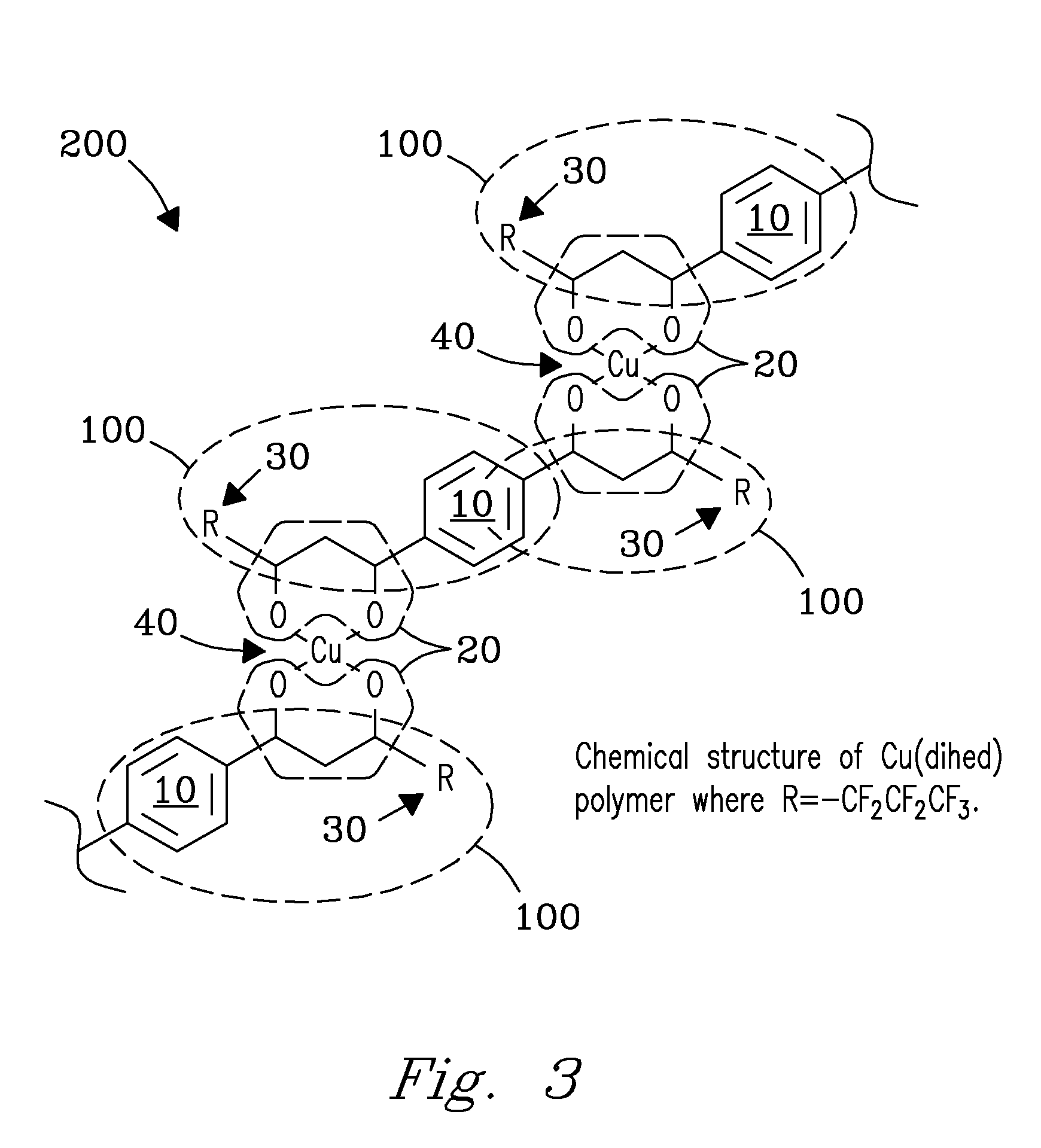Method and apparatus for selective capture of gas phase analytes using metal beta-diketonate polymers
a technology of metal betadiketonate and gas phase analyte, which is applied in the field of polymer compositions for selective adsorption, can solve the problems of concentrating matrix interference along with the analyte of interest, affecting the analytical performance of the reaction, and limited explosive volatility, so as to achieve simplified subsequent analysis, without negative effects on analytical performan
- Summary
- Abstract
- Description
- Claims
- Application Information
AI Technical Summary
Benefits of technology
Problems solved by technology
Method used
Image
Examples
example 1
Preparation of Coated SPME Fibers
[0080]Two groups of SPME fibers were examined, a group that was coated with 7-μm poly(dimethylsiloxane) (PDMS) and one coated with 30-μm PDMS. One fiber within each group was further dip-coated in a concentrated solution (˜250 mg / mL) of La(dihed) dissolved in methanol. Methanol was removed by evaporation, leaving a coating of the selected metal β-diketonate polymer deposited over the top of the PDMS-coated fiber. PDMS fibers not coated with metal β-diketonate polymer served as controls.
example 2
Preparation of Metal β-Diketonate Polymer Stationary Phases
[0081]Stationary phase mixtures were prepared from a mixture of metal β-diketonate polymers dissolved or suspended in methanol and deposited onto a control material, described further hereinbelow. Methanol solvent was removed by rotary evaporation, resulting in a 5% (w / w) loading of metal β-diketonate polymer on the control support material. The control support material was prepared from an inert, deactivated diatomaceous earth, e.g., CHROMQSORB-W® HP (100 / 120 mesh) (Supelco, Bellefonte, Pa., USA), which was further loaded with 3% (w / w) of a poly(dimethylsiloxane) elastomer (e.g., SE-30® polymer, Supelco, Bellefonte, Pa., USA) prepared in methylene chloride solvent. Methylene chloride was removed by rotary evaporation. The control support material was used either alone (control stationary phase) or further loaded with metal β-diketonate polymers to form the experimental stationary phases for packed-column GC studies, as desc...
example 3
Sorbent-Packed Chromatographic Columns Comprising Metal β-Diketonate Polymers
[0082]Control sorbents were prepared with a 3% loading (w / w) of SE-30® polymer (Supelco, Bellefonte, Pa., USA) coated onto a support material comprised of CHROMOSORB-W® HP (100 / 120 mesh) (Supelco, Bellefonte, Pa., USA). Experimental sorbents were prepared by coating a 5% (w / w) loading of a selected metal β-diketonate polymer from methanol onto the control sorbent, as described in EXAMPLE 2. Sorbents (experimental or control) were packed into column blanks made from stainless steel tubing cut to an appropriate length. End plugs were made from silanized glass wool. A first column had exemplary column dimensions of 8 ft.×⅛ in. O.D. The I.D. of the column was 0.083 in. (2.1 mm). A second column had exemplary column dimensions of 2 ft.×⅛ in. O.D. The I.D. of the column was 0.083 in. (2.1 mm). Dimensions are not limited.
PUM
| Property | Measurement | Unit |
|---|---|---|
| Mass | aaaaa | aaaaa |
| Mass | aaaaa | aaaaa |
| Mass | aaaaa | aaaaa |
Abstract
Description
Claims
Application Information
 Login to View More
Login to View More - R&D
- Intellectual Property
- Life Sciences
- Materials
- Tech Scout
- Unparalleled Data Quality
- Higher Quality Content
- 60% Fewer Hallucinations
Browse by: Latest US Patents, China's latest patents, Technical Efficacy Thesaurus, Application Domain, Technology Topic, Popular Technical Reports.
© 2025 PatSnap. All rights reserved.Legal|Privacy policy|Modern Slavery Act Transparency Statement|Sitemap|About US| Contact US: help@patsnap.com



